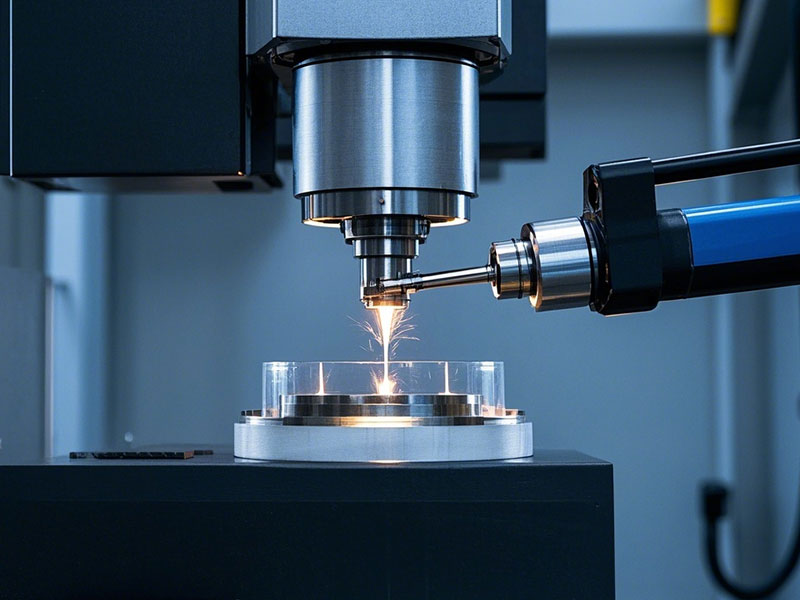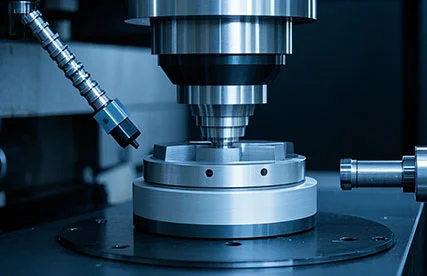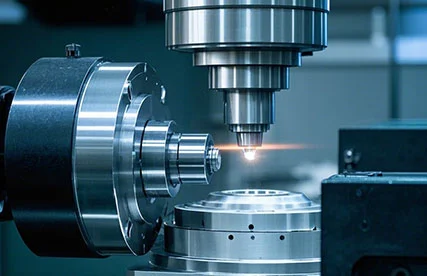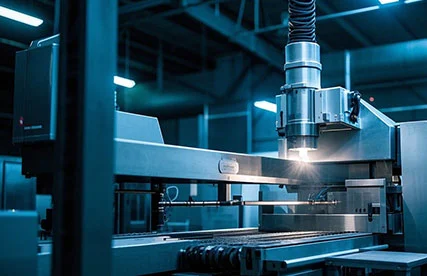Electrical Discharge Machining (EDM) is a non-traditional subtractive manufacturing process that utilizes electrical energy in the form of sparks to cut or remove material from a workpiece. The two common forms of this machining technology are sinker EDM and wire EDM. This article provides a detailed comparison of these two methods, analyzing their advantages, disadvantages, applications, and differences.

Sinker EDM, also known as ram EDM, cavity EDM, or volume EDM, is a type of EDM where an electrode and the workpiece are submerged in an insulating fluid—typically hydrocarbon oil or another dielectric liquid. The process uses a pre-machined electrode (made of copper, graphite, or tungsten) shaped as the "positive" of the desired form. The electrode is then pressed against the workpiece to create the "negative" shape in the material.
Key factors in selecting an electrode for sinker EDM include its resistance and conductivity. For example, graphite electrodes are easier to machine than copper, but copper offers higher conductivity.
Sinker EDM uses a "positive" electrode shape to create complex structures in the workpiece. For instance, if a pyramid shape is needed, the machining tool will be a similarly shaped pyramid.
Let’s quickly examine the advantages and disadvantages of sinker EDM.
Precision: Sinker EDM is ideal for high-precision machining, capable of producing extremely accurate features.
Complex Shapes: Suitable for creating intricate geometries, including irregular blind holes and fixtures.
Low Risk: A low-risk machining process.
Material Versatility: Works on any electrically conductive metal.
Low-Stress Machining: Unlike conventional machining, it generates minimal stress, reducing tool or workpiece deformation.
Complex Structures: Ideal for thin walls, blind cavities, cross-sections, and other intricate designs since it doesn’t always require through-cutting.
Material Limitations: Only works on conductive materials, excluding plastics and composites.
High Energy Consumption: Consumes more electricity than CNC machining due to the high energy required for spark generation.
Time-Consuming: More expensive and slower than traditional machining.
As mentioned, sinker EDM excels in creating complex cavities. It is commonly used for manufacturing hard tools such as molds and dies. Typical applications include:
Mold & die manufacturing
Rapid tooling
Sharp internal corners
Thin, deep ribs
Fine detailing
Blind keyways
Intricate designs in jewelry & precious metals
Internal splines
Wire EDM is another form of EDM. It is a non-contact machining process that uses a thin, charged metal wire and a dielectric fluid (usually deionized water) to cut the workpiece into the desired shape. Also known as spark machining or wire erosion EDM, it requires the workpiece to be electrically conductive (e.g., metals, graphite).
The process does not always require through-cutting. Instead, it uses a fine wire to melt or vaporize the material along a precise path until the wire fully penetrates the workpiece. This makes it ideal for conductive materials that are difficult to machine using conventional methods.
A typical wire EDM setup includes a CNC-controlled machine, power supply, dielectric medium, and an electrode wire (often brass, diffusion-annealed, or coated). It is suitable for cutting aluminum, brass, and harder metals like steel and titanium.
Continuous Machining: The process resumes automatically even if the wire breaks, minimizing downtime.
High Precision: Capable of producing parts with tight tolerances and complex geometries that challenge conventional machining.
Versatility: Can cut a wide range of conductive materials, including aluminum, steel, tungsten, brass, and titanium.
Burr-Free: A single-stage process that leaves no deformation or burrs.
Material Limitations: Only works on conductive materials.
Post-Processing Needed: An oxidized layer forms after cutting, requiring additional finishing steps (increasing costs).
High Costs: Expensive initial setup and maintenance.
Wire EDM is ideal for parts requiring tight tolerances, high precision, and dimensional accuracy. Common applications include:
Automotive: Engine cylinders, gears, transmissions, fuel injectors.
Electronics: Sensors, microchips, connectors.
Aerospace: Turbine blades, landing gear components.
Medical: Surgical implants, prosthetics.
Tool & Die Making: Molds for injection molding, blow molding, die casting.
While both are EDM processes, they differ in several ways:
| Factor | Sinker EDM | Wire EDM |
|---|---|---|
| Cutting Method | Uses a shaped electrode to create sparks | Uses a thin wire to erode material |
| Dielectric Fluid | Hydrocarbon oil | Deionized water |
| Electrode | Custom 3D electrode | Thin, consumable wire |
| Machining Capability | 3D contouring, drilling, deburring | High-precision 2D/3D contour cutting |
| Starting Point | Can begin anywhere on the workpiece | Must start from the edge |
| Precision | High, but wire EDM is often superior | Extremely precise |
The choice depends on your project requirements:
Surface Finish: Wire EDM provides smoother surfaces.
Material & Thickness: Sinker EDM is better for hard, thick metals; wire EDM suits thinner materials.
Cost: Wire EDM is generally more cost-effective.
Geometry: Sinker EDM is ideal for deep cavities and molds.
Production Volume: Wire EDM is faster for large batches.
Both sinker EDM and wire EDM are valuable non-traditional machining processes widely used in various industries. Understanding their similarities, strengths, and limitations will help you select the best method for your manufacturing needs.


